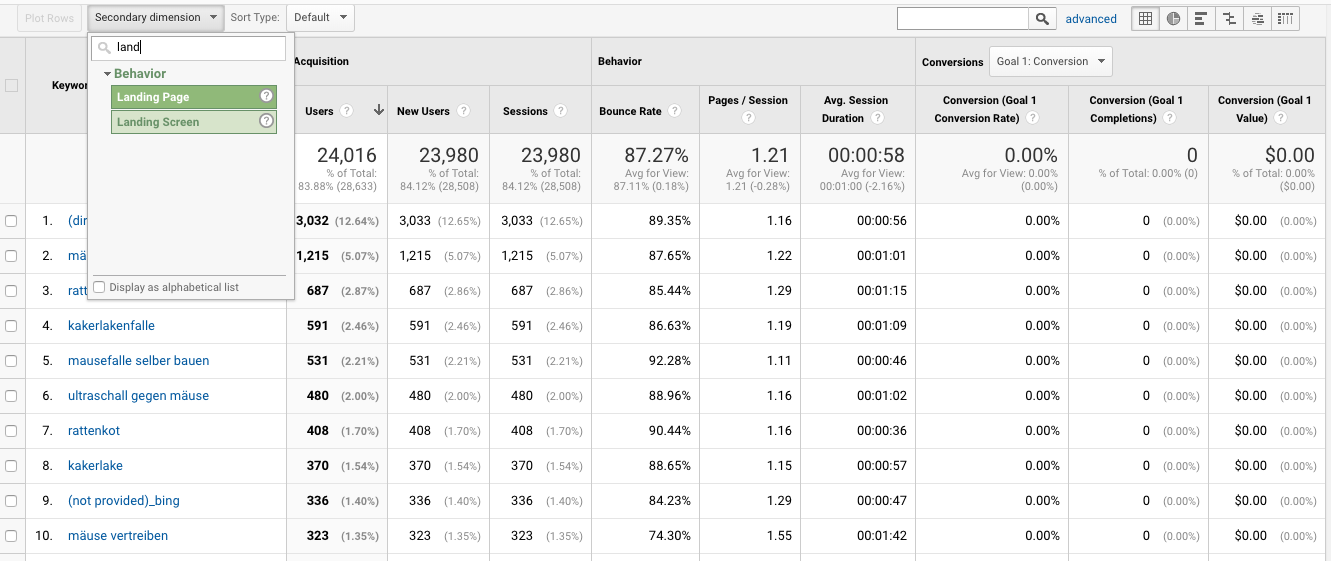Google Analytics Proficiency: Unveiling the Possible of Secondary Dimension
Google Analytics Proficiency: Unveiling the Possible of Secondary Dimension
Blog Article
Unlocking the Power of Second Dimension Analytics for Boosted Information Insights and Decision-Making
In the world of data analytics, primary measurements often take the spotlight, however the real depth of insights lies within the world of second dimensions. These added data points offer a nuanced point of view that can light up relationships and patterns not readily apparent at first glance. By taking advantage of the power of additional dimension analytics, companies can reveal hidden patterns, discover connections, and essence extra meaningful conclusions from their information. The possibility for improved decision-making via the usage of these additional dimensions is huge, guaranteeing a deeper understanding of intricate data collections and leading the way for even more educated strategic options.
Importance of Additional Measurements
Exploring the importance of second measurements in analytics reveals the concealed layers of data understandings crucial for informed decision-making in various domains. Additional measurements give a deeper understanding of main information by offering added context and viewpoints. By including second dimensions right into analytics, organizations can remove much more extensive and nuanced insights from their datasets.
One key importance of additional measurements is their capability to segment and categorize primary data, enabling an extra detailed analysis of certain subsets within a dataset. When looking at the data as a whole, this segmentation enables companies to determine patterns, patterns, and outliers that may not be obvious. Secondary dimensions help in discovering relationships and dependences between different variables, leading to even more precise projecting and anticipating modeling - secondary dimension.
Moreover, additional dimensions play an important duty in boosting data visualization and reporting. By including secondary measurements to visualizations, such as graphes or graphs, experts can produce a lot more insightful and helpful representations of information, promoting far better communication of searchings for to stakeholders. Overall, the combination of additional dimensions in analytics contributes in opening the complete capacity of data and driving evidence-based decision-making.
Key Benefits of Utilizing Secondary Dimensions
Making use of second dimensions in analytics supplies organizations a calculated advantage by boosting the deepness and granularity of data understandings. By exploring information using secondary measurements such as time, place, device type, or user demographics, organizations can discover patterns, fads, and correlations that may otherwise stay concealed.
Additionally, the utilization of additional measurements improves the context in which key data is translated. By leveraging second dimensions in analytics, companies can harness the complete possibility of their information to drive far better decision-making and attain their business goals.
Advanced Information Analysis Methods
A deep study innovative data evaluation strategies discloses advanced methods for extracting valuable insights from complex datasets. One such method is device learning, where algorithms are used to recognize patterns within data, predict end results, and make data-driven choices. This technique enables the automation of analytical version structure, enabling the processing of large quantities of information at a quicker rate than standard techniques.
Another sophisticated strategy is anticipating analytics, which makes use of analytical formulas and maker learning strategies to forecast future results based on historical information. By examining trends and patterns, organizations can anticipate consumer actions, market patterns, and prospective threats, empowering them to make aggressive choices.
Additionally, text mining and belief evaluation are important methods for removing understandings from disorganized data resources such as social media sites remarks, customer reviews, and survey feedbacks. By evaluating text data, companies can recognize consumer point of views, identify arising fads, and enhance their services or products based on responses.
Enhancing Decision-Making With Additional Dimensions

Enhancing decision-making through second measurements allows companies to make more notified and targeted critical options. By segmenting why not try these out consumer data based on additional dimensions like purchasing background or involvement levels, firms can tailor their advertising approaches to specific audience Home Page sectors, leading to improved conversion prices and customer fulfillment. Additional measurements can assist identify relationships and relationships in between different variables, making it possible for companies to make data-driven decisions that drive development and success.
Implementing Second Dimension Analytics
When incorporating additional dimensions in analytics, companies can open much deeper insights that drive tactical decision-making and improve total performance. This involves recognizing the specific inquiries the company looks for to answer and the data points needed to resolve them.

Furthermore, organizations should leverage advanced analytics devices and innovations to simplify the procedure of integrating second measurements. These devices can automate information processing, evaluation, and visualization, permitting companies to focus on analyzing understandings rather than hands-on information adjustment.
Conclusion
In final thought, secondary measurement analytics play a crucial function in improving information insights and decision-making procedures. By using sophisticated data analysis methods and carrying out additional dimensions successfully, organizations can open the power of their information to drive strategic service decisions. The key benefits of using second dimensions can not be overemphasized, as they supply a deeper understanding of data trends and connections. It is essential for organizations to take advantage of second measurement analytics to stay affordable in today's data-driven landscape.
In the realm of information analytics, main measurements typically take the limelight, but the real depth of understandings lies within the world of secondary measurements.Making use of additional dimensions in analytics offers organizations a calculated advantage by enhancing the deepness and granularity of data understandings. By leveraging second dimensions in analytics, organizations can harness the complete possibility of their data to drive website link far better decision-making and attain their company goals.
Carrying out information validation processes and routine audits can aid preserve information top quality and reliability.
By using sophisticated data evaluation strategies and implementing secondary dimensions efficiently, companies can open the power of their information to drive tactical business choices.
Report this page